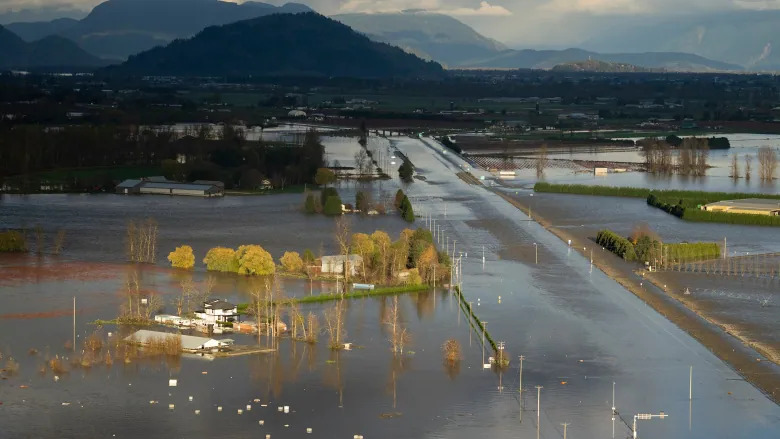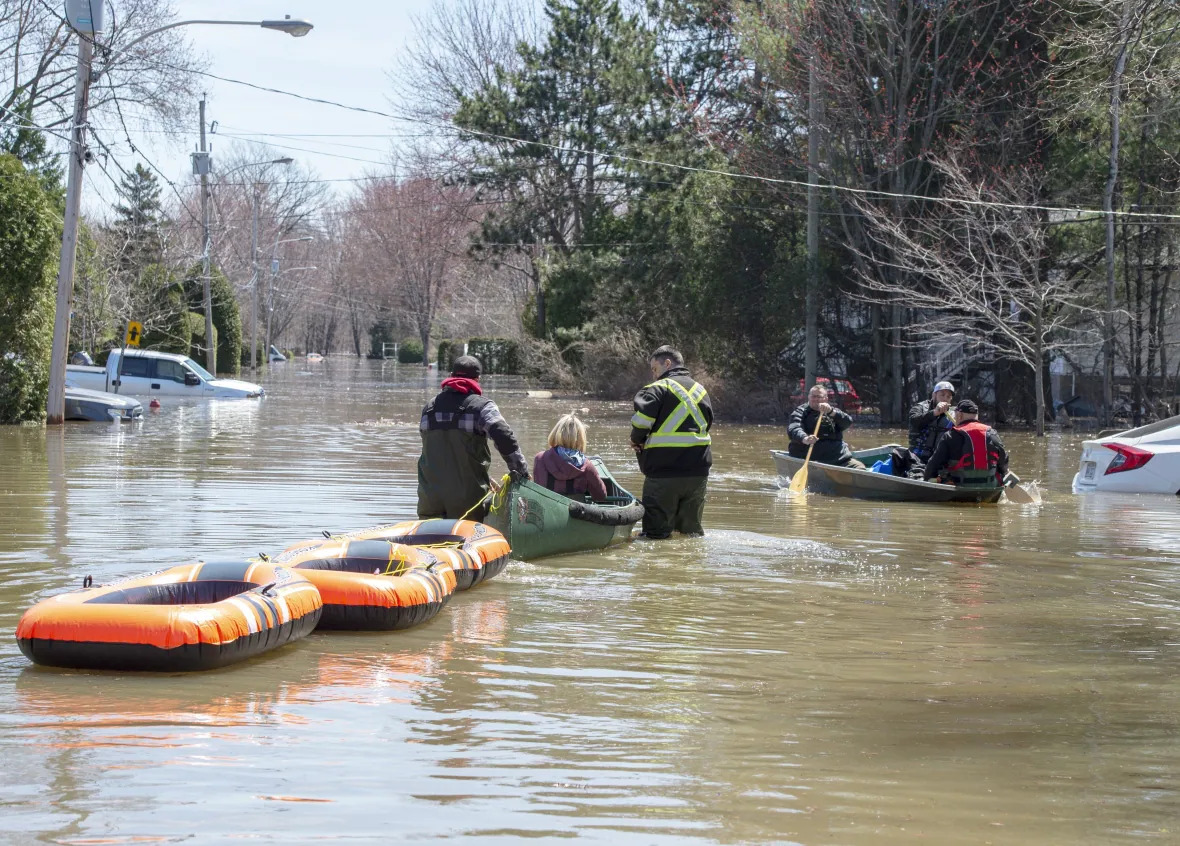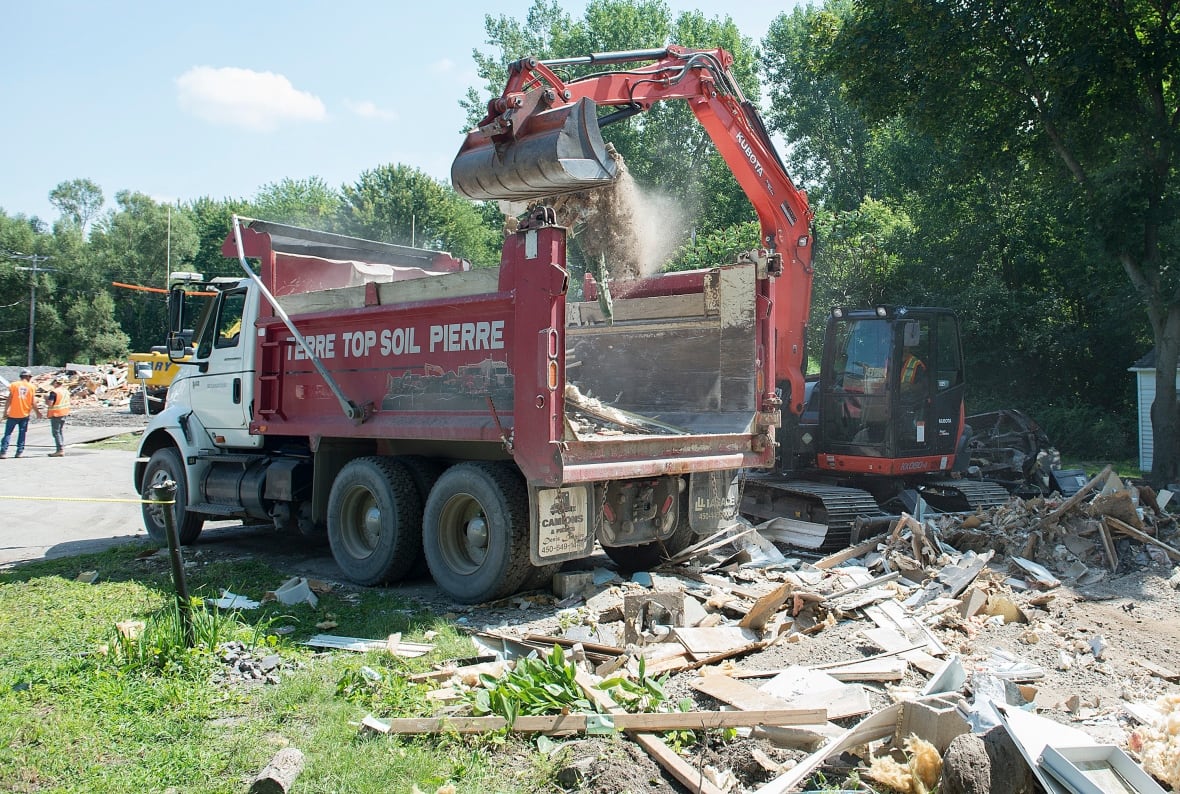
Rising flood water surround a home and covered Highway 1 in Abbotsford, B.C. Experts say improvements to infrastructure are necessary to stave off the devastating impacts of extreme weather. (Jonathan Hayward/The Canadian Press)
More than two years after a failed dike led to flooding in his small Quebec community, Joel Godmer recalls the surreal sight of his home half-submerged in water.
"I was shaking," he said in a recent interview. "I was in shock for sure."
Godmer's home in Sainte-Marthe-sur-le-Lac, Que., west of Montreal, was one of many damaged by flooding in April 2019.
It has since been repaired and the nearby dike rebuilt, one-and-a-half metres higher than before. But this month's flooding disaster in British Columbia brought back bad memories, he said.
"It's a big warning for everyone," Godmer said.
Climate specialists say a major overhaul of infrastructure in communities across Canada is needed to make homes, buildings, roads and rail lines more resilient to extreme weather events, as climate change makes those events more likely.
"Infrastructure decisions in Canada are not accounting for a changing climate," said Ryan Ness, research director for adaptation at the Canadian Institute for Climate Choices.
An engineer, Ness is lead author of a recent report that found if there are not significant investments now to make infrastructure more resilient, Canada could see $13 billion in flooding damage yearly by the end of the century.

Changes are necessary at the individual and government levels, Ness said, ranging from simple home retrofits ensuring functioning sump-pumps to regulations requiring disclosure of climate change risks for major projects.
Protecting the green space that acts as a natural defence against extreme weather is also crucial.
Wetlands, for instance, help keep down temperatures during heat waves and help drain runoff during intense periods of rain, said Joanna Eyquem, managing director of climate resilient infrastructure for the Intact Centre on Climate Adaptation at the University of Waterloo.
Adapting to climate change needs to be seen as a long-term investment, she said.
"We need to learn to learn to live with it more effectively and better," she said. "So that people are not losing their lives and we don't have the same amount of damage."

There are examples across the country of communities taking steps to adapt to more extreme weather.
Based on a climate impact report, the town of Selkirk, Man., built separate storm and septic sewers to better handle excess water and made wider boulevards that can hold more snow.
In Mississauga, Ont., a local conservation group installed walls of vegetation to slow down and clean storm water coming off a major roadway.
"We know how to build resilience into infrastructure because it's being done," said Darren Swanson, an associate with the International Institute for Sustainable Development, a think tank based in Winnipeg.
These kinds of projects need to be happening on a much wider scale, said Swanson.
The federal government has funded some projects — including part of the new dike in Sainte-Marthe-sur-le-Lac. —through its disaster adaptation fund.
Godmer said the higher dike makes him feel safer.
"If they did it the same way it was before, I wouldn't be feeling safe," he said.
But not everyone in the community likes it. Resident Serge Racette said his waterfront home used to have a view of the lake from his backyard, but it is now obstructed by the dike that runs for five kilometres along the shore.

"I understand we have to be protected," Racette said, standing atop the dike looking out over Lac des Deux-Montagnes. "But we have to be protected by the right construction."
He and other homeowners argue the dike is higher than it needs to be and have launched a lawsuit against the municipality.
Beyond infrastructure improvements, other preparations are needed. Residents need to know how to prepare for emergencies, and that requires access to critical information like maps of flood zones and dikes, said Isabelle Thomas, a Université de Montréal professor who specializes in community disaster preparation.
"Whatever the risks, they need to know ... so that it can be prepared," she said.